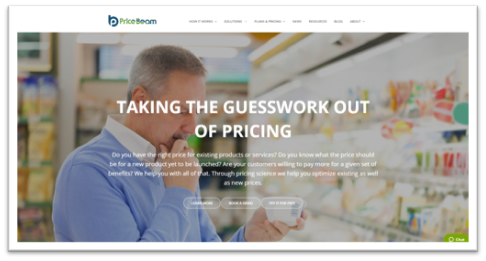The Customer Buying Journey: How much do you know your Ideal Customer?
 PriceBeam
·
3 minute read
PriceBeam
·
3 minute read
.png?width=1200&height=450&name=Linkedin%20Banners%20%20(1200%20x%20450%20px).png)
In 2024, we are noticing a shift in the buying behavior of consumers, and companies should know their consumers more. Knowing each step of the buyer's journey is crucial as to what influences them to buy. There are companies that are mastering the game time and time again.
An article from Nasdaq highlighted the importance of the customer buying journey and the varying influences that would encourage individuals to buy certain products from certain brands. The article uses an example of a guy (Steven) who is in the consideration stage for purchasing a pair noise-cancelling headphones and what drove him to purchase that particular set. It is clear from the article that Steven has a strict budget and was not willing to go over even for a better quality brand. In the end, he purchased based on a pair of headphones that had a high discount. Using Steven as an example this is one of the many varying factors that can influence an individual to purchase.
In order to foster a succinct pricing strategy it is crucial to understand what (potential) customers' would do at each stage of the buying journey and what could influence them to buy. Take Amazon for instance, known for their extremely high customer conversion. A consumer behaviour report revealed 47% of consumers on Amazon overall make a purchase at least once a week. Why? they have their pricing strategy and buyer journey mastered. Amazon understands what influences their customers to buy, so they match their pricing strategy to the buying journey.
Developing a pricing strategy from the customer buying journey.
Pricing can be used as a tool to guide customers on their buyer journey. Thus, developing a strategy relevant to each stage is crucial. We've highlighted some key points that we help our clients with.
Take a look at key points to consider:
-
Understanding customer's perceptions and value: The buying journey highlights how much value customers perceive each stage to have. From the initial research and awareness stage to the final purchase decision. By understanding what customers value at each stage, companies can tailor their pricing strategy and messaging to match these perceptions.
-
Identifying Willingness-to-Pay: Analyzing the different stages of the buying journey can highlight the varying willingness-to-pay. For example, customers who are in the consideration phase may be likely to pay a bit more for a product that meets their needs, while those in the awareness stage may be a bit more price-sensitive. Therefore, companies need to recognize these nuances and adjust pricing strategies accordingly. See PriceBeam's Willingness-to-Pay study.
-
Optimize Price for customer segments: The buying journey often will vary among customer segments. Each segment will usually have unique pain points, by mapping these differences companies can develop different pricing strategies to cater for each segments willingness-to-pay.
-
Understanding which promotion is valuable: Understanding the customer journey at each touch-point can help understand which promotional offers to highlight, see PriceBeam's Promo Lab Study. So for example, introductory offers can attract new customers at the awareness stage. Whereas, loyalty discounts can retain customers at the post-puchase stage.
-
Adapting to competition and market: External factors like competition and market trends can often be difficult to predict, so it important to adapt and adjust accordingly but be careful not to enter into price wars. 📑Suggested read -> Should companies engage in price wars?
These steps can help guide you in adjusting your pricing strategy in a way that responds to your customer buying journey.
Conclusion
Incorporating the customer buying journey into a pricing strategy is about aligning price with perceived value, customer expectations, and market dynamics, leading to increased customer satisfaction, loyalty, and profitability.
How PriceBeam Can Assist
In these challenging times, PriceBeam's expertise can be invaluable. Our tools and analyses are tailored to help you understand and adapt to the unique aspects of markets worldwide. By leveraging our insights, you can make informed pricing decisions that align with current economic trends—interested in exploring how we can specifically help your business in these deflationary times?
Book a free demo with us today and discover how PriceBeam can help you with your pricing strategy.
Sources:
.png?width=400&height=100&name=PBLogoTransparent%20(1).png)




